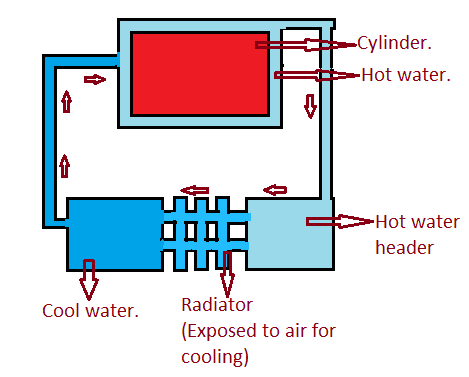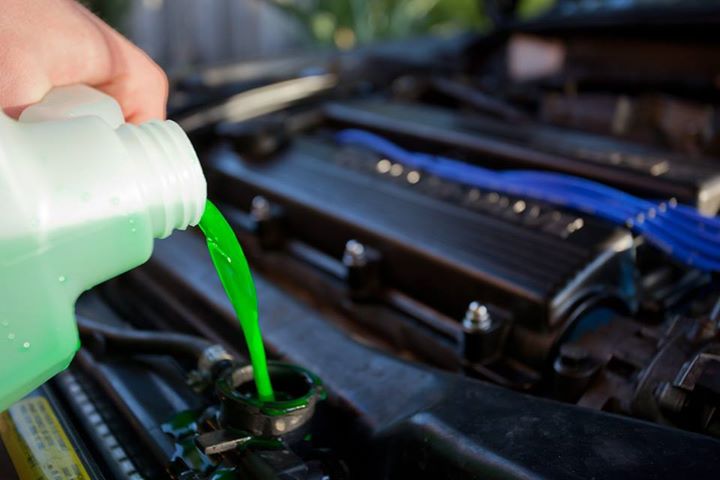Here are the top 50 Automobile Engineering Interview Questions & Answers that are frequently asked in interviews. Please go through all the questions to gain knowledge and command over the important topics.
1. What is meant by ‘engine torque,’ and how is it measured?
Engine torque is the measure of the rotational force an engine can generate, usually expressed in pound-feet (lb-ft) or Newton-meters (Nm). It is measured using a dynamometer.
2. What are the units of engine torque?
Engine torque is measured in pound-feet (lb-ft) or Newton-meters (Nm).
3. Define mean effective pressure.
Mean Effective Pressure (MEP) is the average pressure acting on the piston during the power stroke in an engine. It is a crucial parameter for evaluating engine performance.
4. What is the approximate fuel consumption of a diesel engine compared to an equivalent petrol engine?
Diesel engines generally have lower fuel consumption compared to equivalent petrol engines.
5. What is meant by ‘piston stroke’?
Piston stroke refers to the distance the piston travels inside the cylinder, from top dead center (TDC) to bottom dead center (BDC).
6. What determines the power developed in a diesel engine?
The power developed in a diesel engine is determined by the combustion of diesel fuel in the cylinders.
7. If the diameter of an I.C. engine is doubled, how does it affect the power output?
Doubling the diameter of an I.C. engine increases the power output by a factor of four.
8. State the approximate maximum air-fuel ratio employed in diesel engines.
The approximate maximum air-fuel ratio in diesel engines is around 18:1.
9. In an engine, what is ‘piston displacement’?
Piston displacement is the total volume swept by all the pistons in the engine during one complete cycle.
10. What compression ratios are typical for automotive diesel engines?
Compression ratios for automotive diesel engines are typically higher than those for petrol engines, often ranging from 15:1 to 20:1.
11. What is the interval between power impulses in a V-8 engine?
The interval between power impulses in a V-8 engine is 90 degrees of crankshaft rotation.
12. Define S.I. and C.I. in the context of I.C. engines.
S.I. stands for Spark Ignition, referring to engines ignited by a spark plug (e.g., petrol engines). C.I. stands for Compression Ignition, indicating engines ignited by compressing the air-fuel mixture (e.g., diesel engines).
13. What is the main disadvantage of a 2-cylinder in-line type engine compared to the opposed type?
The main disadvantage of a 2-cylinder in-line engine is the inherent imbalance, leading to increased vibrations.
14. What is the purpose of an engine flywheel?
The engine flywheel serves to store and release rotational energy, providing smoother operation and helping maintain consistent power output.
15. Define ‘power’ and ‘torque.’
Power is the rate at which work is done or energy is transferred, measured in watts or horsepower. Torque is the rotational force applied to an object, measured in pound-feet or Newton-meters.
16. What is the distinction between internal and external combustion engines?
In internal combustion engines, the combustion of fuel occurs within the engine (e.g., petrol and diesel engines). In external combustion engines, combustion occurs outside the engine (e.g., steam engines).
17. How does the Diesel cycle differ from the Otto cycle?
The Diesel cycle involves constant pressure heat addition, while the Otto cycle involves constant volume heat addition.
18. What is the ignition temperature of diesel fuel?
The ignition temperature of diesel fuel is approximately 210°C (410°F).
19. What is the estimated cylinder temperature after compression in a diesel engine?
The estimated cylinder temperature after compression in a diesel engine is around 700°C to 900°C (1292°F to 1652°F).
20. What is the air standard efficiency of (i) an Otto cycle and (ii) a diesel cycle?
(i) The air standard efficiency of an Otto cycle is higher than that of a diesel cycle.
21. What is meant by clearance volume?
Answer: Clearance volume is the volume in the cylinder between the piston at top dead center and the cylinder head, when the combustion chamber is at its smallest.
22. If both the diameter and the stroke length of an I.C. engine are doubled, how does it affect (i) power output, (ii) torque produced?
(i) Power output increases by a factor of eight, (ii) Torque produced increases by a factor of four.
23. Why is a diesel engine also referred to as a C.I. engine?
Diesel engines are called Compression Ignition (C.I.) engines because ignition is achieved by compressing the air-fuel mixture.
24. What is the primary advantage of a V-type engine?
The primary advantage of a V-type engine is its compact design and shorter overall length, making it suitable for various applications.
25. Why does the acceleration response in a multi-cylinder engine tend to be quicker compared to a single-cylinder engine of comparable size?
The firing intervals in a multicylinder engine result in more even and continuous power delivery, leading to quicker acceleration compared to a single-cylinder engine.
26. Define I.P. and B.P., and state their respective units.
I.P. stands for Indicated Power, and B.P. stands for Brake Power. Their respective units are typically measured in horsepower or kilowatts.
27. Which is generally more efficient: petrol or diesel engines, and why?
Diesel engines are generally more fuel-efficient than petrol engines due to higher thermal efficiency and energy density of diesel fuel.
28. What is the purpose of an engine flywheel?
The engine flywheel helps to smooth out fluctuations in rotational speed, ensuring more consistent power delivery and reducing vibration.
29. Name the four stages of combustion in a diesel engine.
The four stages of combustion in a diesel engine are ignition delay, fuel injection, premixed combustion, and diffusion combustion.
30. What is the approximate cranking compression pressure in an automotive diesel engine?
The approximate cranking compression pressure in an automotive diesel engine is around 300 to 500 psi (pounds per square inch).
31. What is the purpose of a turbocharger in an internal combustion engine?
A turbocharger increases engine efficiency by compressing the intake air, allowing for more fuel to be burned and providing enhanced power output.
32. Define brake-specific fuel consumption (BSFC).
Answer: Brake-specific fuel consumption is a measure of an engine’s fuel efficiency, representing the amount of fuel consumed per unit of power produced, usually expressed in grams or pounds per kilowatt-hour.
33. Explain the concept of over-square and under-square engine designs.
An over-square engine has a larger bore diameter than stroke length, while an under-square engine has a larger stroke length than bore diameter.
34. What is the role of the camshaft in an internal combustion engine?
The camshaft controls the opening and closing of the engine’s valves, regulating the intake of air and exhaust gases and synchronizing with the piston’s movement.
35. Differentiate between naturally aspirated and supercharged engines.
Answer: Naturally aspirated engines rely on atmospheric pressure for air intake, while supercharged engines use a compressor (supercharger) to force more air into the combustion chamber, increasing power output.
36. Explain the concept of the Atkinson cycle in internal combustion engines.
Answer: The Atkinson cycle is an engine cycle that sacrifices some power efficiency for increased fuel efficiency by having a longer expansion stroke than compression stroke.
37. What is the function of the EGR (Exhaust Gas Recirculation) system in an internal combustion engine?
The EGR system reduces nitrogen oxide emissions by recirculating a portion of exhaust gases back into the engine’s combustion chamber, lowering combustion temperatures.
38. Define the term “knocking” in the context of internal combustion engines.
Knocking (or detonation) is the uncontrolled and premature ignition of the air-fuel mixture in the combustion chamber, leading to undesirable pressure spikes and potential engine damage.
39. What is the purpose of the thermostat in an automotive cooling system?
Answer: The thermostat regulates the engine’s operating temperature by controlling the flow of coolant through the radiator, ensuring optimal engine performance.
40. Explain the concept of variable valve timing (VVT).
Variable valve timing adjusts the timing of the opening and closing of engine valves, optimizing performance, fuel efficiency, and emissions across different operating conditions.
41. What is the significance of the compression-ignition temperature in diesel engines?
The compression-ignition temperature is the minimum temperature required for diesel fuel to auto-ignite under compression. It influences the engine’s ignition timing and combustion characteristics.
42. Define the term “stoichiometric ratio” in the context of air-fuel mixtures.
The stoichiometric ratio is the ideal ratio of air to fuel in an air-fuel mixture that allows complete combustion with no excess fuel or oxygen remaining.
43. How does the cooling system in an internal combustion engine contribute to engine efficiency?
Answer: The cooling system dissipates excess heat generated during combustion, preventing engine overheating and ensuring optimal operating conditions for efficiency and longevity.
44. Explain the purpose of the catalytic converter in an automotive exhaust system.
The catalytic converter reduces harmful emissions by facilitating chemical reactions that convert pollutants like carbon monoxide, nitrogen oxides, and unburned hydrocarbons into less harmful substances.
45. What is the role of the crankshaft in an internal combustion engine?
The crankshaft converts the reciprocating motion of the pistons into rotational motion, ultimately driving the vehicle’s wheels.
46. Define the term “knock sensor” in relation to engine management systems.
A knock sensor detects engine knocking or detonation and sends signals to the engine control unit (ECU), allowing the system to adjust ignition timing to prevent damage and optimize performance.
47. What is the purpose of the intake manifold in an internal combustion engine?
The intake manifold distributes the air-fuel mixture to the engine cylinders, ensuring each cylinder receives the correct proportion for combustion.
48. Explain the concept of a dual overhead camshaft (DOHC) in an engine.
A dual overhead camshaft system features separate camshafts for intake and exhaust valves, providing precise control over valve timing and enhancing engine performance.
49. What is the role of the alternator in a vehicle’s electrical system?
The alternator generates electrical power to charge the vehicle’s battery and supply electricity to various components, such as lights, sensors, and the ignition system.
50. Define the term “lean-burn” in the context of internal combustion engines.
Lean-burn refers to running an engine with an air-fuel mixture containing a higher proportion of air compared to the stoichiometric ratio, aiming for increased fuel efficiency and reduced emissions.


